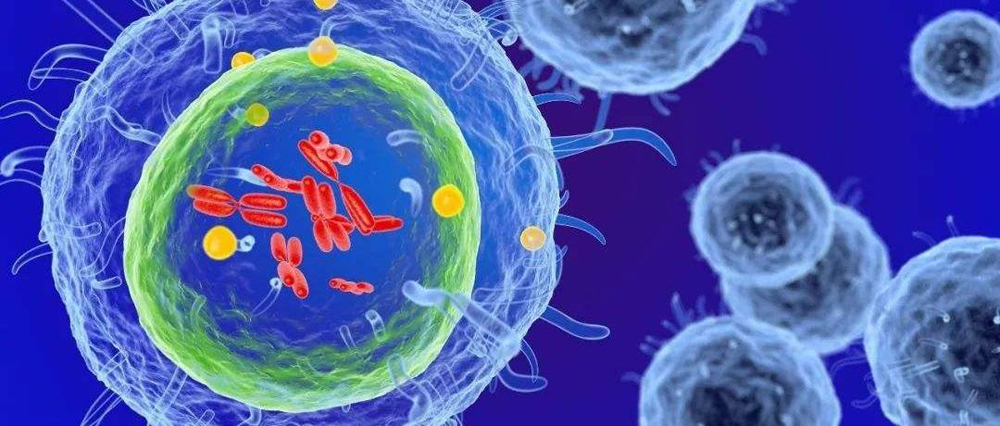You may have heard of “targeted therapy” for tumors, and perhaps in your impression, it represents “new medicine, advanced, expensive”. Compared with chemotherapy, what are the characteristics of targeted therapy? What should I pay attention to when using targeted therapy?
In the concept of most cancer patients and their families, perhaps only “radical surgery” can cure the tumor. Please don’t take the meaning of “radical cure” literally, it just means that there is no residual disease in the surgical area. tumor cells. A tumor is called a “devil” because it is a systemic disease from the very beginning – that is, when we first discover the disease, the cancer cells are likely to have migrated from where they originally grew When it comes to blood and other organs, unfortunately, in the early stage of the disease, we cannot detect them very sensitively by means of CT and nuclear magnetic resonance. This is why many cancer cells grow in other places after a few years of surgery, and eventually lead to the patient’s death. Therefore, doctors usually ask those patients who have advanced stages but can still be surgically removed, after the surgery or at the beginning of the surgery. Before, several chemotherapy or targeted therapy were needed, because these cancer-killing weapons can be distributed to every corner of the body through the blood, helping us to eliminate malignant tumors hidden in other places.
Chemotherapy is to kill cancer cells with some drugs that have cell killing activity, because actively growing cells are usually more sensitive to this drug, and tumor cells are growing wildly in the body, so chemotherapy drugs have an effect on the treatment of tumors, but unfortunately we Faster growing cells in the body also respond to chemotherapy drugs, such as bone marrow cells and hair follicle cells, which is why white blood cells decrease and hair loss occurs during chemotherapy. Targeted therapy, on the other hand, makes the shells that hit tumor cells have eyes, and can target tumor cells more accurately. Why is this? Because tumor cells have some specific marker proteins on the surface, these proteins are not found in normal cells, which makes it easier for drugs to identify and kill these cells. For example, in breast cancer treatment Herceptin, the drug can target a protein called Her2, so that the protein only grows on breast cancer cells, and its expression is very low in normal breasts. Unfortunately, there are many breast cancer patients, and not everyone has this protein on tumor cells. Only about 25% of patients can benefit from Herceptin treatment because of Her2-positive. After the above introduction, you may know that when using targeting, we must find a suitable target, produce a suitable drug for this target, and then screen out the suitable people to use this drug from a large number of tumor patients.
Since targeted therapy specifically targets specific tumor cells, its side effects are generally smaller than those of chemotherapy drugs, and the side effects of chemotherapy are different. For example, Tarceva, a targeted drug for lung cancer, has fewer side effects such as leukopenia and hair loss caused by chemotherapy drugs, but it has other side effects, such as rash in 70% of patients, and about Nausea, vomiting and diarrhea occur in half of the patients, and post-medication fatigue is also a common side effect. But for most symptoms, only simple symptomatic treatment is required to correct them. For common rashes, studies have found that the intensity of the rash is usually closely related to the efficacy of the treatment. In addition to the side effects mentioned above, there are also some drugs that may cause damage to organ function. For example, the drug Herceptin for breast cancer can damage the heart function to a certain extent. Therefore, it is a necessary step to evaluate the heart function before each treatment.
If doctors seek opinions from patients and their family members on whether to use targeted therapy, it is usually not because the patient’s cancer cells have no targets, but precisely because the tumor cells in the body just have targets for drug treatment. However, because targeted therapy is widely used in my country Some areas are still not covered by medical insurance and are more expensive. More importantly, due to the inherently complex nature of tumors, even targeted patients have benefits that some patients cannot obtain from treatment. Scientists are making the greatest efforts. Help everyone identify those patients who can benefit from the treatment and which ones cannot, but the current situation is that the effectiveness and safety of the treatment need to be fully communicated with the doctor during the treatment process. Determining whether to use medication requires full consideration of the condition, possible efficacy, and family financial ability. In addition, some targeted drugs have “buy and give” activities, that is, you can continue to use a few courses for free on the premise that you have used a certain course of drugs and the treatment is effective. For details, you can consult the attending doctor.
In addition, there is another problem that is otherwise overlooked, that is, patients with advanced stage will develop resistance after using most targeted drugs, that is, in the case of using drugs, the tumor still grows. This is regrettable but unavoidable. In this case, chemotherapy, a new generation of targeted therapy drugs, or clinical trials of new drugs can be used according to the physical condition. Let us hope that scientists and doctors will develop drugs faster and faster, and more and more precise tumor-killing drugs will help patients achieve long-term survival.









